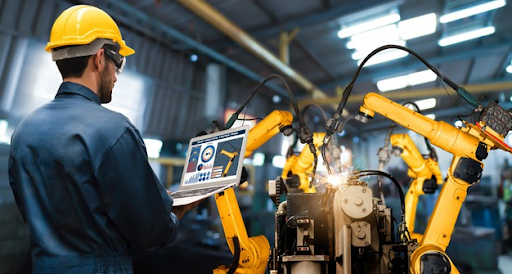Contrary to other human workers, industrial robots are content to repeatedly do the same job for days, weeks, months, and years on end. But, more than that, robots function accurately every time, supporting manufacturers to increase production output and upgrade product quality and consistency. As expected, the advantages and disadvantages of using an industrial robotic arms deployment must be considered to decide whether the return on investment meets your business needs. Read this article to know more about the costs and benefits of using robotic arms in your production facility.
Table of Contents
Advantages
Here are the following benefits of using robotic arms at your factory.
Accuracy and Precision
One of the key benefits of a collaborative robot arm in your facility is that they are highly accurate and precise. Robots work specifically how they are programmed without any deviation, hence their accuracy and precision. This contributes to the company’s improved condition and reduces defective products, leading to cutting costs and optimizing processes.
Quick and Efficient
Speed and efficiency are the primary competitive leverage that robots deliver to an industrial operation. Robots are quick and highly efficient in carrying out their tasks. Also, as mentioned above, they are precise and accurate. Therefore, they can perform multiple tasks and help companies improve their market position and financial status.
Enhanced Production Capability
Industrial robotic arms help businesses improve their production capacity. This is because robots are mechanical, do not require breaks, and can function the whole day. What’s more, they do not get sick or call in absent, besides the fact that they work quicker and more accurately than any human worker. Thus, they can produce more per hour compared to any human worker.
Improve Manufacturing Facility’s Working Condition
Keep in mind that it would be suitable to use robots if the job is dangerous, difficult, dirty, or dull. As a result, the workers who previously carried out this work can now engage in other tasks in improved working conditions. In addition, other jobs that are more mentally engaging are way better for their health.
Prestige
You can wow your clients when they come and see your facility because robots can serve as your marketing tool to boost your company image.
Disadvantages
Below are the downsides of deploying robotic arms to your production floor.
Robots are Neither Creative nor Innovative
Let’s face it, robots cannot be creative or innovative. This is because industrial robots can only fulfill tasks as they are instructed to through programming. Moreover, robots cannot tell when consumer preferences are shifting and what they want.
Production companies, therefore, must always keep their eyes on the market trend and adapt to the changes. Getting a cobot (collaborative robot) enables companies to change and adapt fast in the robotics industry. Still, there are significant tasks that cannot be assigned to these robots.
They Need Regular Monitoring
Robots have to be monitored to ensure that they do not get any mechanical faults that would cause them to stall.
Note that any error could lead to losses to the company. But with the advancements in technology, monitoring robots has become easy. What’s more, it can even be done remotely. The robots can send feedback on their processes via text to the operator. In case of a slight technical hitch, it can also be corrected remotely without stopping the operation.
Learning Their Technical Abilities and Limitations
More often than not, the acquiring company does not have the necessary expertise in getting a robot. Collaborative robot arms can perform numerous tasks within the factory, and factory workers need the knowledge to make them function effectively. Also, cobot arms need tremendous add-ons and external fixtures that most buyers do not know about.
The manufacturer, such as robotic arm manufacturer EVS, ensures that they train the buyers of their robots. This training is usually considered an additional cost above the amount of buying the robot. Fortunately, this type of training is an included service by EVS.
Worry About Job Losses
Robots are perceived to be taking over jobs that are being carried out by human workers. With their mechanical ability and cost-effectiveness, they can replace human workers in the factory once they have more substantial capabilities. Cobots are helping eliminate this fear. Instead of replacing human workers, robot arms can serve as a helping tool that assists humans in the factory.
Conclusion
We hope this article has given you some insight before implementing industrial robotic arms in your business. However, if you need more assistance or want to find out more about the benefits of robot arms, don’t think twice about seeking professional help. They know how and which industrial robotic arms to use for your project.
What do you think about this blog? Put your comment in the box below to know your thoughts.




